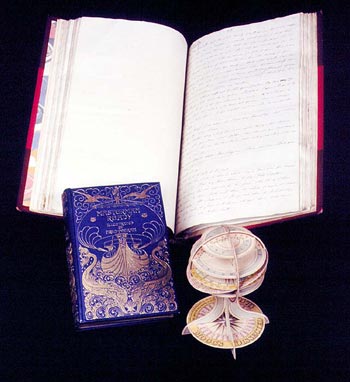
The market for children's books was an eighteenth-century innovation. By the last half of the nineteenth century, it was a major publishing enterprise. Efforts to educate greater portions of the populace and a growing middle class had fostered a larger reading public. Advancing technology had changed the appearance and availability of books. New illustrative and binding processes were often tested on books for children, giving them a glamour that dust jackets must provide today.
At the same time, parents and the clergy continued to use books and toys as teaching tools. Because character development was a major concern, even as earlier books with explicit morals and lessons were replaced by more adventuresome fiction, honesty, hard work, compassion, and even self-sacrifice, were retained as themes. As the century advanced—with Americans expanding westward and the British developing their empire—adventure and fantasy became more common. Boys were admonished to temper the glory and excitement of their exploits with acts of honor and valor, avoiding the thoughtlessly aggressive behavior of quarreling bullies and fast-talking tricksters.
Honor, Glory, Adventure celebrated the variety and appeal of books and toys for boys during the Victorian and Edwardian periods. Its topics included sports and games, technology and trades, geography and travel, humor, and tales of adventure, history, and fantasy. Also on display were anamorphic images, peepshows, and early inventions relating to animation—precursors to moving pictures—such as the phenakisticope, which was invented in 1832, and the Kinematofor, which was invented in Germany about 1903.
Left: Frederick Marryat (1792–1848)
Masterman Ready; or, the Wreck of the Pacific. Written for Young People.
With illustrations by Fred Pegram and an introduction by David Hannay
London: Macmillan and Co., 1897, in publisher's binding
The Pierpont Morgan Library, Bequest of Gordon N. Ray, 1987, GNR 6391
Right: Edward Mogg
Mogg's Dissected Globe; or Pocket Sphere; for the Instruction of Youth in the First Principles of Geography and Astronomy
London, 1812
The Pierpont Morgan Library, Gift of Julia P. Wightman, 1991, JPW 2894
Back: Frederick Marryat (1792–1848)
Masterman Ready
Autograph manuscript, [ca. 1841–42]
The Pierpont Morgan Library, Purchased, 1930, MA 1084
